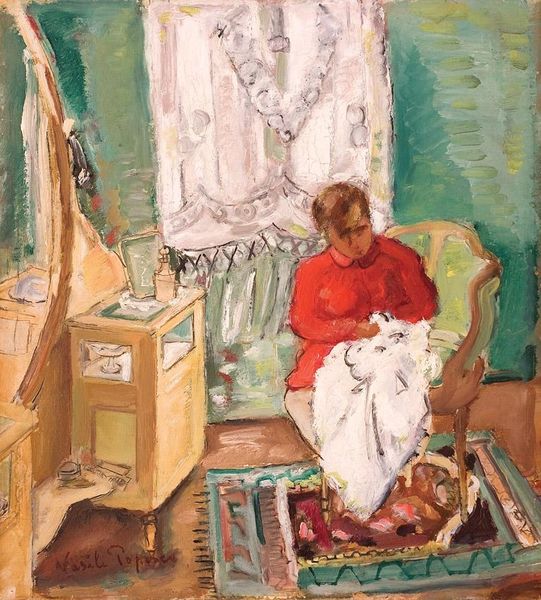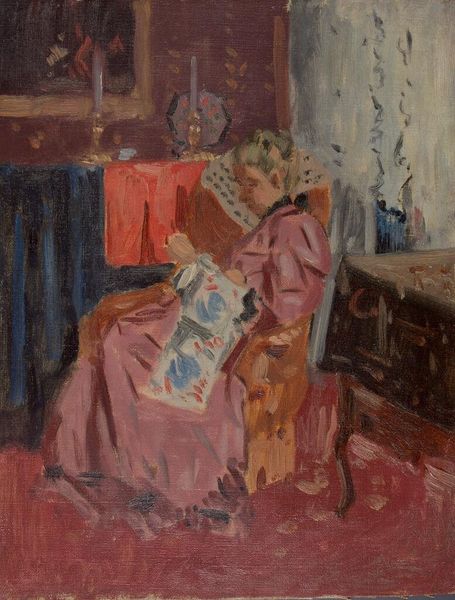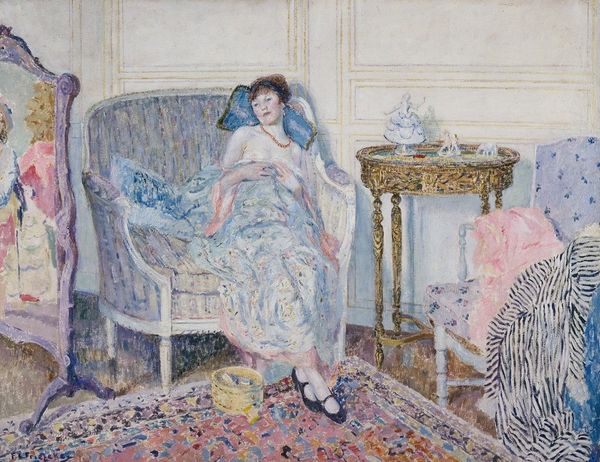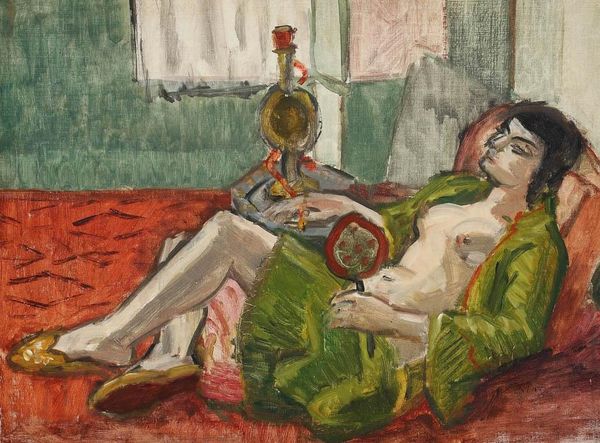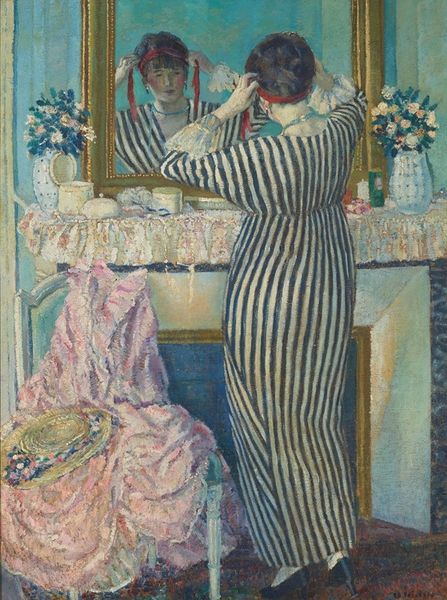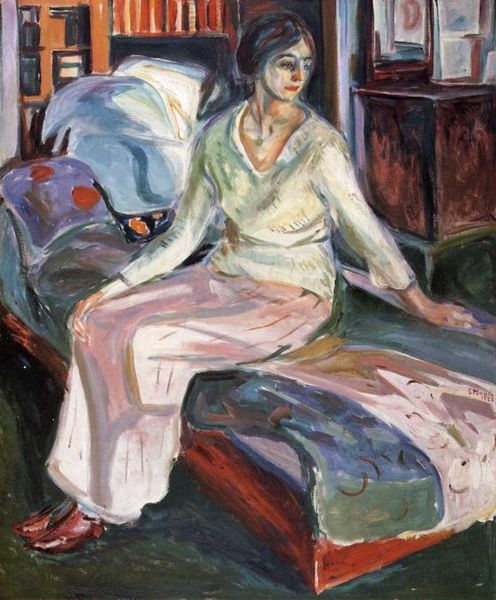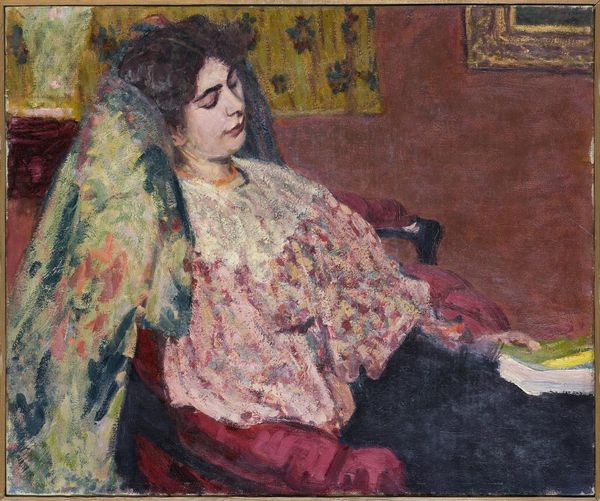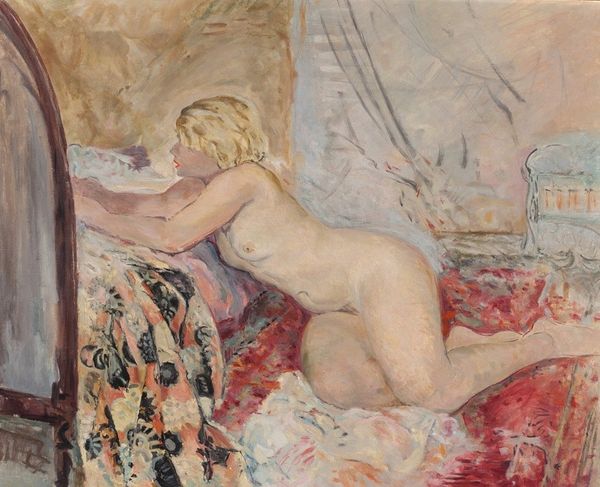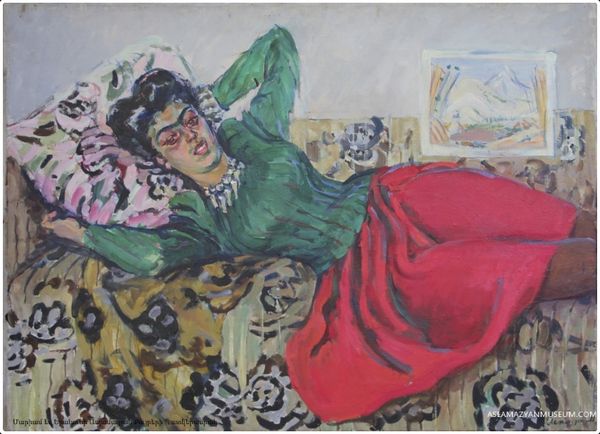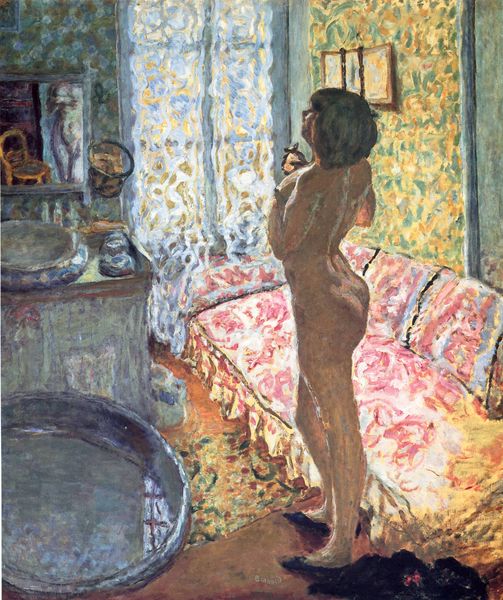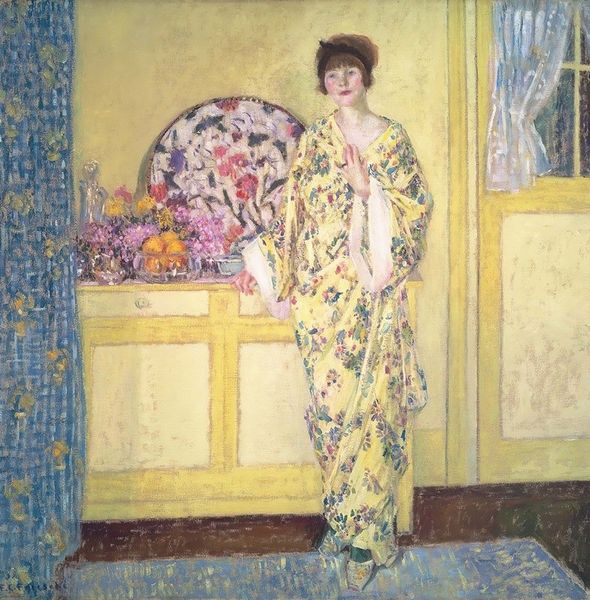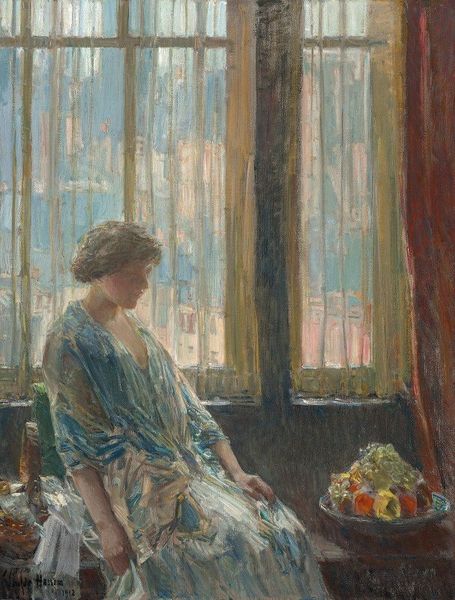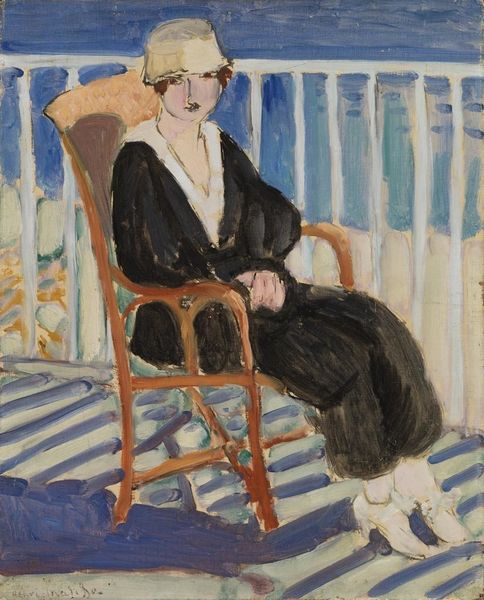
Copyright: Public Domain: Artvee
Editor: So, this is Henri Lebasque’s "Femme à sa toilette," painted around 1922 or 1923. It's an oil painting showing a woman getting ready, captured in a really intimate moment. There's a quietness to it that I find really striking. What do you see in this piece, beyond the surface? Curator: Oh, but isn't it just like life caught in a breath, the everyday spun into art? To me, this painting whispers of those fleeting moments of self-reflection. See how Lebasque uses impressionistic brushstrokes, loose and full of light, not just to depict, but to evoke. It’s as if he’s painting the very air of the room, thick with unspoken thoughts. Don’t you think the mirror acts almost as another character, a silent observer doubling the intimacy? Editor: I do see the doubled intimacy now, definitely. It almost feels voyeuristic. It also occurs to me that this is not a grand scene; rather, it's a quiet corner of life. I wonder why he chose this angle. Curator: Maybe he felt it was in these domestic settings that true character revealed itself. Like a painter with a penchant for secret stories, whispered among patterned wallpaper and the gleam of a mirror. Or maybe he was interested in capturing the fleeting, intimate beauty of his model—likely his wife or muse. This all feels somehow akin to poetry, where simple words craft monumental emotions, doesn't it? Editor: It does, a poem of the everyday. I never thought I'd find such depth in something that initially seemed like just a woman at her mirror! Curator: That, my friend, is the beautiful treachery of art—isn't it? To transform the ordinary into a revelation.
Comments
No comments
Be the first to comment and join the conversation on the ultimate creative platform.
